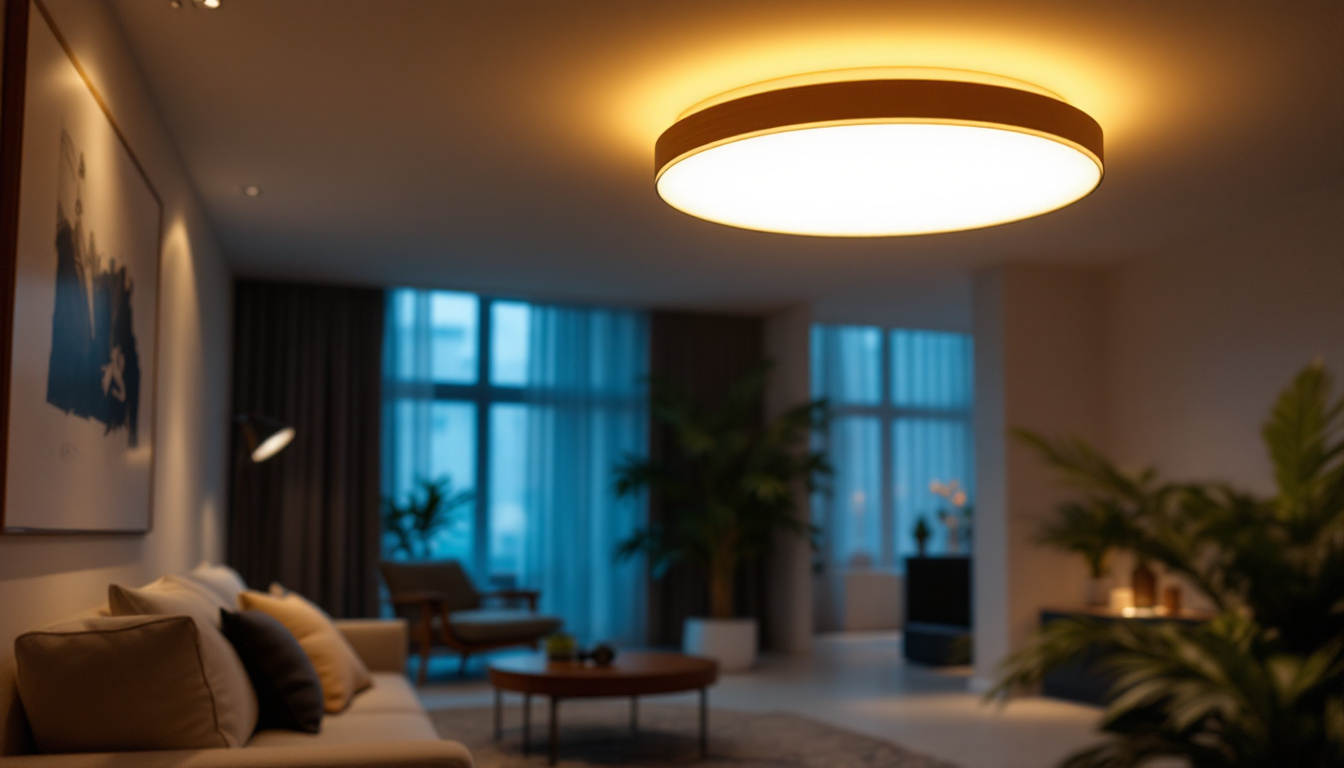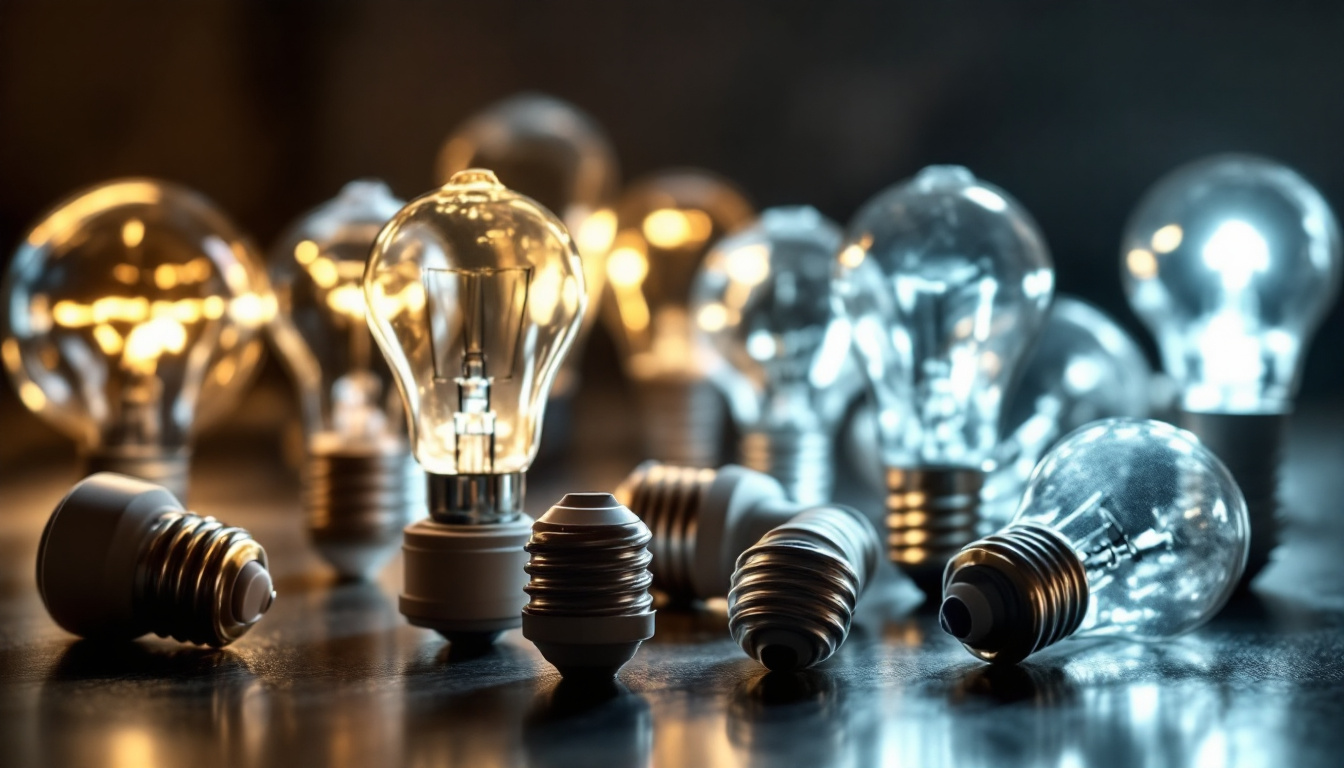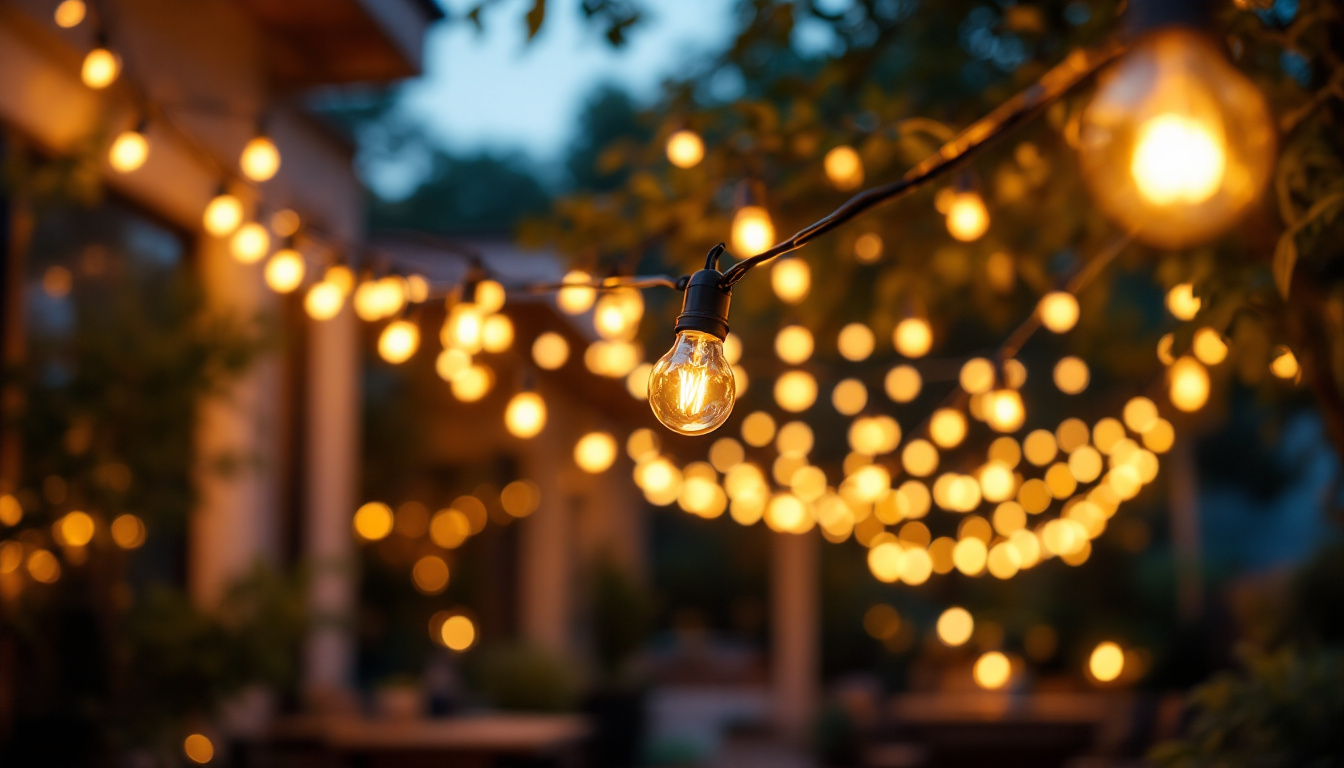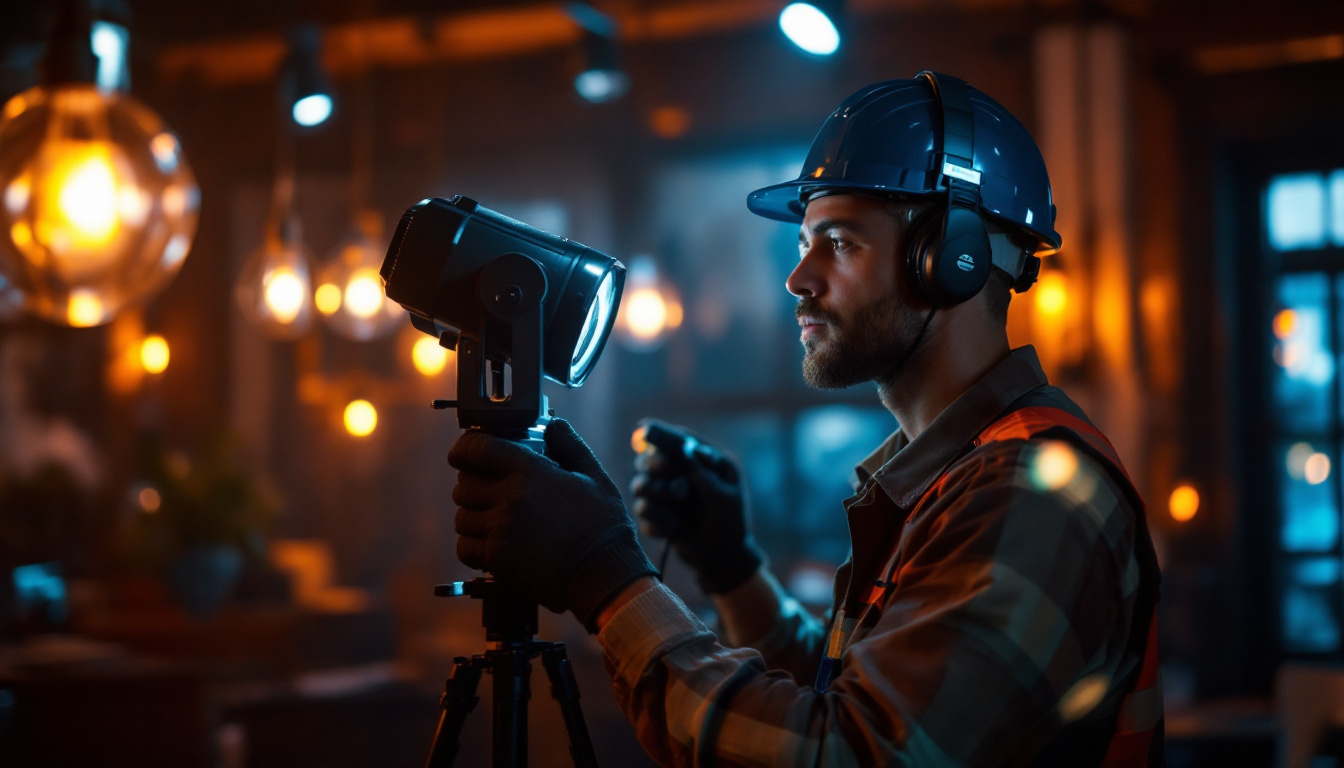
In the world of lighting design, decorative lightbulbs have emerged as a popular choice for enhancing aesthetics while providing illumination. For lighting contractors, understanding the nuances of decorative lightbulbs is essential to meet client expectations and elevate their projects. This article delves into the various aspects of decorative lightbulbs, from types and applications to installation tips and trends.
Decorative lightbulbs are not just functional; they are also a statement piece in any lighting design. These bulbs come in various shapes, sizes, and finishes, allowing them to complement a wide range of interior and exterior styles. Their primary purpose is to provide light while also serving as a decorative element that enhances the overall ambiance of a space. In recent years, the popularity of decorative lightbulbs has surged, as homeowners and designers alike seek to create unique atmospheres that reflect personal style and taste. The right decorative bulb can transform a mundane room into a vibrant, inviting space, making it an essential consideration in any lighting project.
There are several types of decorative lightbulbs available on the market, each with its unique characteristics and applications. Understanding these types will enable lighting contractors to recommend the best options for their clients. From the classic warmth of filament bulbs to the playful hues of colored bulbs, each type serves a distinct purpose and can dramatically alter the perception of a space.
Decorative lightbulbs can be utilized in numerous applications, making them versatile tools for lighting contractors. Here are some common uses:
Furthermore, decorative lightbulbs can also be integrated into smart home systems, allowing users to control brightness and color via smartphone apps or voice commands. This modern twist on traditional lighting not only adds convenience but also enables homeowners to customize their lighting to suit their mood or occasion. As technology continues to evolve, the potential for decorative lightbulbs to enhance both functionality and aesthetics in our living spaces becomes increasingly exciting.
When selecting decorative lightbulbs, several factors come into play. Lighting contractors must consider the client’s needs, the intended atmosphere, and the technical specifications of the bulbs.
The color temperature of a bulb significantly influences the ambiance of a space. Measured in Kelvin (K), the color temperature can range from warm (below 3000K) to cool (above 5000K). For a cozy, inviting atmosphere, warm white bulbs are preferred, while cooler temperatures are suitable for workspaces or modern designs. Additionally, the choice of color temperature can also affect how colors appear in the room. Warmer lights can enhance earthy tones and create a sense of comfort, while cooler lights can make colors appear more vibrant and true to life, which is particularly beneficial in retail settings where product presentation is key.
Understanding wattage is crucial for ensuring adequate brightness without overwhelming the space. Decorative bulbs often come in various wattages, and it’s important to match them with the fixture’s specifications. LED options provide energy efficiency and longer lifespans, making them a popular choice among contractors. Furthermore, it’s essential to consider the lumen output of the bulbs, as this measurement indicates the actual brightness perceived by the human eye. A higher lumen count means a brighter light, which can be critical in areas that require more illumination, such as kitchens or workspaces, while softer lighting may be more appropriate for living rooms or bedrooms where relaxation is the goal.
Not all decorative bulbs fit every fixture. Contractors should ensure that the chosen bulb is compatible with the fixture type and design. For instance, some fixtures may require specific base types, while others may have limitations on bulb size or shape. Additionally, the style of the fixture can also dictate the type of bulb that would be most aesthetically pleasing. Vintage-style fixtures often pair well with Edison bulbs, which not only provide warm light but also add a nostalgic charm to the decor. On the other hand, sleek, modern fixtures may benefit from the clean lines of a globe or a tubular bulb, enhancing the contemporary feel of the space.
In today’s environmentally conscious market, energy efficiency and sustainability are increasingly important factors in the selection of decorative lightbulbs. Many contractors are opting for LED bulbs, which consume significantly less energy than traditional incandescent bulbs while offering a longer lifespan. This not only reduces the frequency of replacements but also lowers energy bills for clients. Moreover, some manufacturers are now producing bulbs made from recycled materials or employing eco-friendly manufacturing processes, allowing contractors to recommend products that align with their clients’ values regarding sustainability. As the demand for green building practices continues to rise, incorporating energy-efficient lighting solutions will not only meet client expectations but also contribute positively to the environment.
Proper installation is key to maximizing the aesthetic and functional benefits of decorative lightbulbs. Here are some essential tips for lighting contractors:
Before beginning any installation, safety should be the top priority. Ensure that the power is turned off at the circuit breaker to prevent electrical shocks. Use appropriate tools and wear safety gear as needed.
When installing decorative lightbulbs, consider their positioning and spacing. For example, in a chandelier, bulbs should be evenly spaced to create a balanced look. In outdoor settings, string lights should be hung at appropriate heights to ensure visibility and safety.
After installation, it’s important to test the bulbs to ensure they function correctly. Adjustments may be needed to achieve the desired lighting effect. This could involve changing the angle of fixtures or replacing bulbs with different color temperatures for better ambiance.
The decorative lighting industry is constantly evolving, with new trends emerging regularly. Staying informed about these trends can help lighting contractors offer fresh ideas to their clients.
Smart lighting technology has made its way into the decorative bulb market. These bulbs can be controlled via smartphone apps or voice commands, allowing users to adjust brightness, color, and scheduling. This trend appeals to tech-savvy clients looking for convenience and customization.
With a growing emphasis on sustainability, eco-friendly decorative lightbulbs are gaining popularity. LED bulbs, which consume less energy and have a longer lifespan, are an excellent choice for environmentally conscious clients. Additionally, manufacturers are increasingly offering bulbs made from recyclable materials.
Contemporary design often incorporates mixed materials in decorative light fixtures. Combining metals, glass, and even wood creates unique aesthetics that cater to various design preferences. Lighting contractors should be aware of these trends to provide clients with innovative solutions.
Decorative lightbulbs play a vital role in modern lighting design, offering both functionality and style. By understanding the different types, applications, and installation techniques, lighting contractors can better serve their clients and enhance their projects. Keeping up with trends and innovations in the decorative lighting market will ensure that contractors remain competitive and capable of meeting diverse client needs.
Incorporating decorative lightbulbs into lighting designs not only elevates the aesthetic appeal but also contributes to the overall experience of a space. As the demand for unique and personalized lighting solutions continues to grow, contractors who are well-versed in decorative lighting will be well-positioned to thrive in the industry.
Ready to take your lighting projects to the next level with decorative lightbulbs that combine style, efficiency, and affordability? Look no further than LumenWholesale. Our extensive selection of spec-grade lighting products is designed to meet the highest industry standards, ensuring you deliver outstanding results to your clients. With unbeatable wholesale prices and the convenience of free shipping on bulk orders, LumenWholesale is your go-to source for premium lighting without the premium price tag. Elevate your lighting designs today by visiting Wholesale Lighting at the Best Value and discover the perfect blend of quality, affordability, and convenience.

Discover the latest trends and expert tips from top lighting contractors on choosing and installing LED ceiling lights.

Discover the various types of light bulb sockets and their top benefits for lighting contractors.

Explore how commercial string lights are transforming energy efficiency in modern spaces.

Discover expert tips and best practices for installing hi hat lights in this comprehensive guide tailored for lighting contractors.